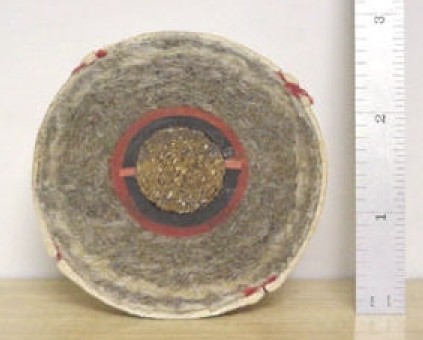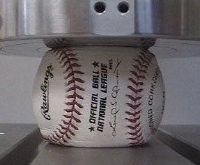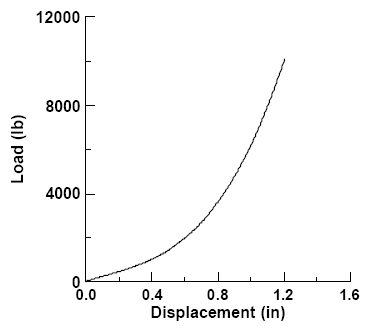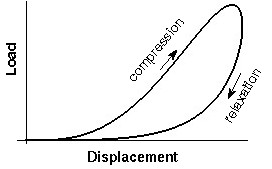The construction of a modern softball is less complicated. A modern softbal basically consists of either a cork or rubber core surrounded by a leather skin.
In attempting to develop a model that correctly captures the essential phyiscs behind the trampoline effect in a hollow bat, at least to a first order approximation, the ball may be treated as a single degree of freedom mass-spring system. The mass of the ball is just the total mass of the actual ball. To determine the spring constant, or stiffness, and the damping constant for the ball we must first learn more about its nonlinear behavior.
* In the summer of 2004 I had the opportunity to partipate in an experiment comparing a dozen unused Rawlings MLB baseballs from the 1970's with a dozen baseballs made in 2004. We wanted to see if we could find any evidence that modern baseballs were "juiced" compared with older baseballs. We fired the baseballs from an air cannon at 120mph towards a rigid surface and measured the coefficient-of-restitution. We found no statistical difference between the two sets of balls.[3]




